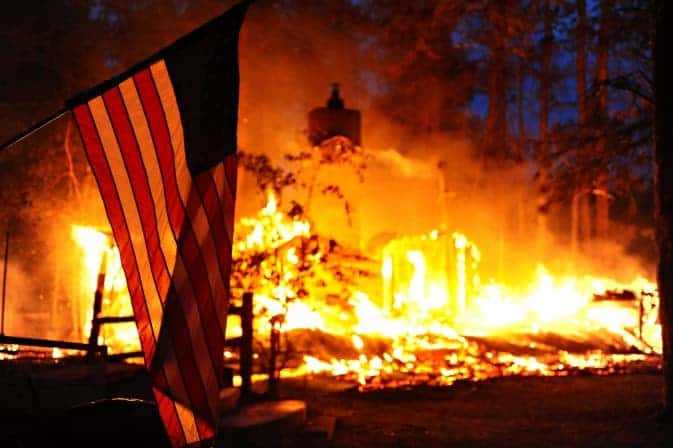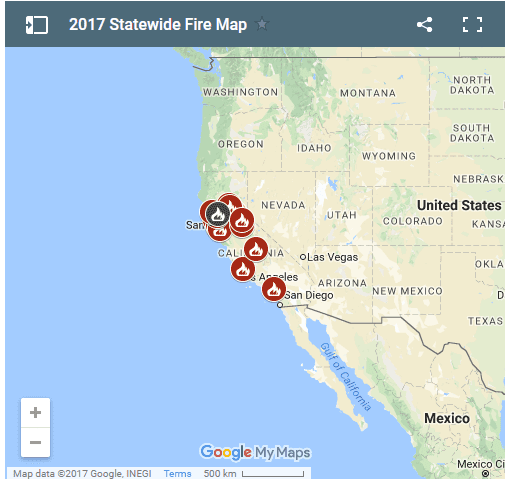At least 23 succumbed and thousands are being evacuated as dramatic wildfires scorch through California.

Unprecedented scale
Wildfires are not particularly rare in California. The dry, windy, and hot weather provide all the necessary conditions for the fire to spread, but the 2017 season has been particularly destructive. Some 170,000 acres are burning, with 8,000 firefighters battling 22 fires. Over 600 missing persons reports have already been filed, with 23 confirmed fatalities already — and things aren’t slowing down. Ken Pimlott, chief of the California Department of Forestry and Fire Protection says things might get even worse, as firefighters and rescuers can’t even get into some areas.
“We are literally looking at explosive vegetation,” Pimlott said. “It is very dynamic. These fires are changing by the minute in many areas.”
Some 20,000 people have been ordered to evacuate, as gusts aren’t really calming down. The acreage hasn’t increased, but many areas are at the mercy of winds, and Governor Jerry Brown has declared a state of emergency for the counties of Napa, Sonoma, and Yuba.
“We have had big fires in the past. This is one of the biggest, most serious, and it’s not over,” Brown said at a news conference Wednesday.

Indeed, large swaths of wine country have already been devastated and this is already shaping up to be the worst wildfire event in California’s modern history. It’s not entirely clear how the situation will develop.
“We often have multiple fires going on, but the majority of them all started right around the same time period, same time of night – it’s unprecedented,” Amy Head, the fire captain spokeswoman for Cal Fire, the state agency responsible for fire protection, told the Guardian. “I hate using that word because it’s been overused a lot lately because of how fires have been in the past few years, but it truly is – there’s just been a lot of destruction.”
Why this is happening
It will take a while after the flames settle down to identify the circumstances which led to this situation, but we already have good reasons to say that humans are at least partially at blame.
In recent years, California has faced devastating droughts, culminating in 2014 with the worst drought in at least 1,200 years. Last year, however, the weather was much wetter, encouraging vegetation to grow lusher — making it much more susceptible to catching fire. The connection between global warming and droughts is well established. In particular, one study concluded that this warming can lock California in drought for centuries. So warming leads to drought, and drought leads to wildfires — another connection that’s well established. But it’s more than that.
“It’s very clear that the increasingly hot summers are the product of climate change,” said Daniel Swain, a climate scientist at the University of California, Los Angeles. “And it’s clear that human influence has an impact on the climate system in the American West and more broadly. That increases the risk of fire and the overall acreage burned when we get these conditions.”
Decades of aggressive firefighting have also left a lot of fuel on the ground, which also feeds the wildfires. Careless house planning has also left many homes in vulnerable positions. To make things even worse, humans often cause the spark that starts a wildfire.
A 2011 study found that forest fires in the western United States have been increasing in size and possibly severity for several decades, with climate change and human activities being largely to blame. Understanding the nature and magnitude of these impacts is challenging but also important. As devastating as these fires have been, the next ones might be even worse.


